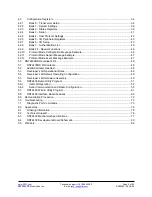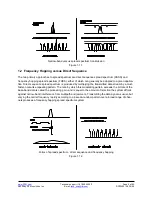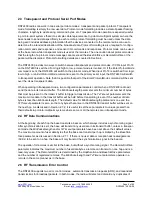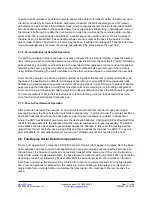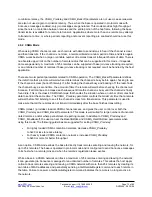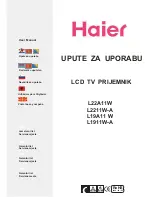
www.RFM.com
Technical s1.678.684.2000
Page 13 of 82
©2009 by RF Monolithics, Inc.
E-mail:
DNT2400 - 08/18/09
to minimize latency, the CSMA_Predelay and CSMA_Backoff parameters are not used. Lease renewals
are also not used, again to minimize latency. Thus, when the base is operated in protocol mode with
Announce messages enabled, only join messages are generated. This mode provides high throughput
since there is no contention between remotes and the entire portion of the hop frame following the base
transmission is available for a remote to transmit. Applications where more than one remote may attempt
to transmit at a time, or where periodic reporting and/or event reporting are enabled should not use this
mode.
2.9.2 CSMA Mode
When using CSMA channel access, each remote with data to send listens to hear if the channel is clear
and then transmits. If the channel is not clear, a remote will wait a random period of time and listen again.
CSMA works best when a large or variable number of remotes transmit infrequent bursts of data. There is
no absolute upper limit on the number of remote radios that can be supported in this mode - it depends
on message density. A maximum of 254 remotes can be supported if base join-leave tracking is required,
or an unlimited number of remotes if base join-leave tracking is not required or will be handled by the host
application.
There are two important parameters related to CSMA operation. The CSMA_Backoff parameter defines
the initial time that a remote will wait when it determines the channel is busy before again checking to see
if the channel is clear (back-off interval). If, after finding the channel busy and backing off, the radio finds
the channel busy a second time, the amount of time the remote will wait before checking the channel will
increase. It will continue to increase each subsequent time the channel is busy until the channel is finally
found idle. This is the classic CSMA technique that handles the situation where a number of remotes hold
data to send at the same time. The CSMA_ Predelay parameter controls the maximum time that a remote
will wait before first listening to see if the channel is clear for a transmission. This parameter is used to
make sure that all the remotes do not transmit immediately after the base finishes transmitting.
CSMA (mode 1) provides classical CSMA channel access, and gives the user control over both the
CSMA_Predelay and CSMA_Backoff parameters. This mode is well suited for large numbers of uncoordi-
nated remotes, and/or where periodic/event reporting is used. In addition to CSMA_ Predelay and
CSMA_ MaxBackoff, the user can set the BaseSlotSize and CSMA_RemtSlotSize parameters when
using this mode. The following guidelines are suggested for setting CSMA_Predelay:
•
For lightly loaded CSMA contention networks, decrease CSMA_Predelay
to 0x20 or less to reduce latency.
•
For heavily loaded CSMA contention networks, increase CSMA_Predelay
to 0x80 or more for better throughput.
As an option, CSMA mode allows the base to directly track remotes entering and leaving the network, for
up to 254 remotes. The base is operated in protocol mode and is configured to send Announce messages
to its host when a remote joins and when the remote’s registration lease expires.
While a base in a CSMA network can track a maximum of 254 remotes entering and leaving the network,
it can generate join Announce messages for an unlimited number of remotes. This allows the host appli-
cation to track remotes entering and leaving a CSMA network with more than 254 remotes by creating its
own table of MAC addresses and periodically sending a GetRemoteRegister command to each remote in
the table. Failure to answer a GetRemoteRegister command indicates the remote is no longer active in
the network.




